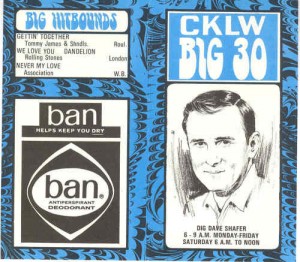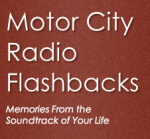Switch To Nostalgia Format Boosts CKLW’s Ratings
From the MCRFB Aircheck Library, featuring:
CKLW.Marc.Avery.K.800.Marc.Avery.1984.mp3
DETROIT — The rapid rise of CKLW-AM Windsor from a .8 rating to a 5.2 rating in six months may be perceived by competing stations as an example of the “flash in the pan” syndrome that has affected other nostalgia outlets. However, CKLW operations manager Dave Shafer insists, “We have a lot of plans to insure it sustains itself.”

Baton Broadcasting sold CKLW AM-FM to present owner Keith Campbell in January, after the struggling AC outlet had sunk to a .8 in the Fall Arbitron book. “Seems the police radio had more action,” jokes Schafer.
Campbell switched formats to Al Ham’s “Music Of Your Life,” and results were immediately apparent in the Winter book’s 4.0 ratings. With the Spring’s book’s 5.2, Shafer notes, “That’s an increase of over 600% in just six months.”
Shafer attributes some of CKLW’s success to the fact that the 50,000-watt AM reaches 18 states and two provinces, and that it’s big band format is the first in the market “since WCAR 35 years ago.”
In addition, Shafer credits the station’s somewhat altered approach to “Music Of Your Life.” “We’ve done some things different than Al Ham,” he notes. “We’ve added more cuts; our repertoire is more varied that normal.”
Another factor contributing to CKLW’s popularity, says Shafer, is a staff of well-known Top 40 deejays, among them Jim Davis, formerly of Detroit stations WXYZ, WJR and WOMC; Bob Charleson, previously with Detroit’s WWJ and WCAR; and Dave Prince, who had served at WXYZ as well as Los Angeles outlets KIIS and KHJ.
Competing stations such as WJOI and all-news WXYT have felt the effect’s of CKLW’s rise, but their respective program directors say they are not at all concerned. At WJOI, which went from a 9.8 fall rating to a 6.1 in the spring, PD Steve VanOort says, “They’re taking some of our older audience, but this isn’t a competitive format. There’s nothing we will do or can do. We’re not going to start programming big band music.
“We do go after the same audience,” VanOort continues, “but easy listening, because it’s more contemporary, has a younger audience. Sure, we’ve been affected in the older demos, but our 25-54 numbers haven’t changed that much.”
WXYT program director John Harper concurs. “They’ve only affected our 55-plus numbers,” he says. WXYT went from a 4.6 in the fall to a 3.4 in the spring.
“Across the country,” Harper says, “the big band format has a tradition of a meteoric rise and fall.” CKLW’s success, he says, could be considered distressing, “but it’s only 55-plus numbers.”
CKLW’s Shafer disagrees. “Our listeners’ average age, according to our research firm, is 40-49, and I think it’s actually 44. And these people aren’t old or dead. They’re the biggest buying public out there.”
Shafer claims it usually takes a year and a half to achieve this kind of growth, but notes that “people are still finding us. We receive an average of 350 letters a day.” END.
(Information and news source: Billboard; August 10, 1985).
![]()
